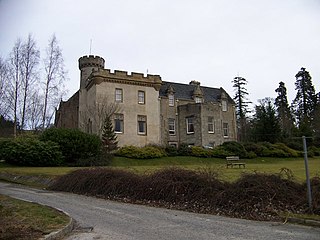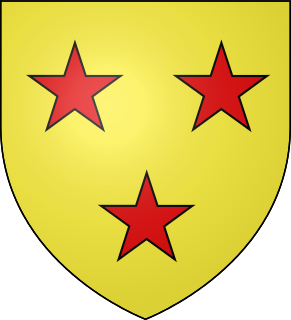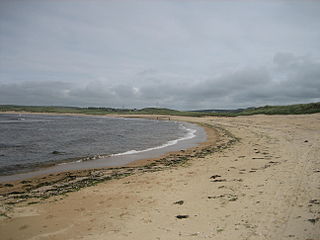 W
WClan Mackay is an ancient and once-powerful Highland Scottish clan from the far North of the Scottish Highlands, but with roots in the old Kingdom of Moray. They supported Robert the Bruce during the Wars of Scottish Independence in the 14th century. In the centuries that followed they were anti-Jacobite. The territory of the Clan Mackay consisted of the parishes of Farr, Tongue, Durness and Eddrachillis, and was known as Strathnaver, in the north-west of the county of Sutherland. However, it was not until 1829 that Strathnaver was considered part of Sutherland when the chief sold his lands to the Earls of Sutherland and the Highland Clearances then had dire consequences for the clan. In the 17th century the Mackay chief's territory had extended to the east to include the parish of Reay in the west of the neighbouring county of Caithness. The chief of the clan is Lord Reay and the lands of Strathnaver later became known as the Reay Country.
 W
WThe Mackays of Aberach also known as the Clan Aberach are a Scottish family and a branch of the ancient Clan Mackay of the Scottish Highlands. They were the senior cadet branch of the Clan Mackay and were seated at Achness, in Strathnaver, which is in modern-day Sutherland. In Scottish Gaelic they are known as the Sleaght-ean Aberigh.
 W
WThe Battle of Aldy Charrish was a Scottish clan battle that took place on 11 July 1487. The Clan Mackay and possibly the Clan Sutherland defeated the Clan Ross and their allies in the Scottish Highlands, probably on the south side of Strathoykel.
 W
WThe Battle of Alltan-Beath also known as the Battle of Ailtan-Beath was a Scottish clan battle said to have taken place in the year 1542 in the village of Knockarthur, in Sutherland, in the Scottish Highlands. It was fought between men of the Clan Mackay and men of the Clan Sutherland whose chiefs were the Gordon, Earls of Sutherland.
 W
WThe Bain or Bayne family were a minor Scottish noble family.
 W
WBorve Castle in Sutherland, Scottish Highlands is now a ruin. Formerly called the House of Burro. It was built in Kirtomy Bay near the hamlet of Farr. It is also known as Farr Castle.
 W
WThe Battle of Clynetradwell was a Scottish clan battle that took place in 1590 in the county of Sutherland between the forces of Alexander Gordon, 12th Earl of Sutherland and George Sinclair, 5th Earl of Caithness.
 W
WThe Battle of Drumnacoub was a Scottish clan battle involving factions of the Clan Mackay fought in the far northwest of Scotland, some time between 1427 and 1433. It took place on a hill called Carn Fada at the southern end of the Kyle of Tongue, between Ben Loyal and the village of Tongue. It was fought between members of the Clan Mackay and men of the Clan Sutherland. The battle was recorded by the 15th century chronicler, Walter Bower, in his work Scotichronicon.
 W
WThe Battle of Garbharry was a Scottish clan battle fought in the year 1555. It was the last battle to be fought between the Clan Mackay and Clan Sutherland. It was fought "beside the water of Garbharry", at "the foot of the hill called Beinn-mhor, in Berriedale". This has been recognised as the area around Garvery Hill, including Big and Little Garvery Burn, just south of Morven, where presumably some of the soldiers drowned.
 W
WThe Battle of Harpsdale was a Scottish clan battle fought in 1426 at Achardale, about 8 miles (13 km) south of Thurso. The Clan Mackay had invaded Caithness from the west and Harpsdale was where the local Clan Gunn chose to make a stand. Despite great slaughter on both sides, the battle appears to have been inconclusive.
 W
WLord Reay, of Reay in the County of Caithness, is a title in the Peerage of Scotland. Lord Reay is the hereditary Clan Chief of Clan Mackay, whose lands in Strathnaver and northwest Sutherland were known as the Reay Country. The land was sold to the Earls of Sutherland in the 18th century. Lord Reay also refers to a legendary magician in Caithness folklore.
 W
WThe Sandside Chase was a Scottish clan battle which took place in 1437 in Caithness, about 6 miles (9.7 km) west of Thurso. The Clan Mackay launched a raid from Strathnaver towards Thurso until they encountered resistance from the locals at Dounreay. The Mackays then pulled back to Sandside, where they were joined by reinforcements and slaughtered the defenders on the coast north of Reay.
 W
WThe Mackays of Scoury were a minor noble Scottish family and a branch of the ancient Clan Mackay, a Highland Scottish clan. They were seated at Scourie Castle, in Scourie, in the parish of Eddrachillis, county of Sutherland. However, Scourie was part of the Mackay chief's province of “Strathnaver” until it was sold to the Earl of Sutherland in 1829.
 W
WStrathnaver or Strath Naver is the fertile strath of the River Naver, a famous salmon river that flows from Loch Naver to the north coast of Scotland. The term has a broader use as the name of an ancient province also known as the Mackay Country, once controlled by the Clan Mackay and extending over most of northwest Sutherland.
 W
WThe Battle of Tannach was a Scottish clan battle fought about 3 miles (4.8 km) southwest of Wick, in the far north of Scotland. It was fought between men of the Clan Keith and Clan Mackay from Strathnaver against men of the Clan Gunn and possibly their allies the Clan Oliphant and Clan Sutherland from Caithness. The date is uncertain, it was probably in 1464 but may have been in 1438.
 W
WThe Battle of Tarbat was a Scottish clan battle fought in the 1480s on the Tarbat peninsula, in Easter Ross. The Clan Ross cornered a raiding party of Clan Mackay near the village of Portmahomack and put many of them to the sword. The survivors sought sanctuary in the nearby church but the Rosses set fire to it, killing all inside. The Mackays took revenge for this outrage in the subsequent Battle of Aldy Charrish.
 W
WThe Battle of Tuiteam Tarbhach was a Scottish clan battle in which the Mackays wiped out raiders from the Clan MacLeod of Lewis who were returning from an attack on Mackay land in Strathnaver. The Mackays caught up with the raiders on the north bank of the River Oykel some three miles west of where the river joins the River Cassley at the head of the Kyle of Sutherland. The battle probably took place in 1406, but the date is uncertain from the manuscripts.